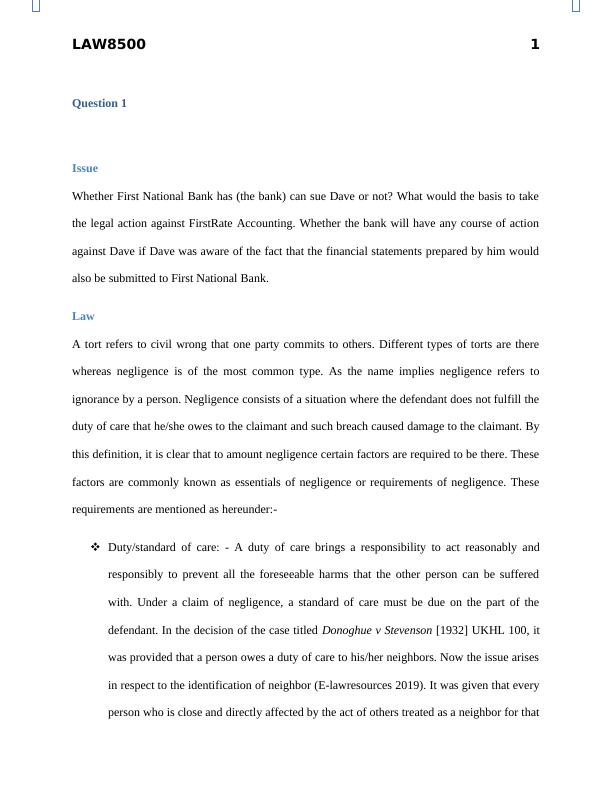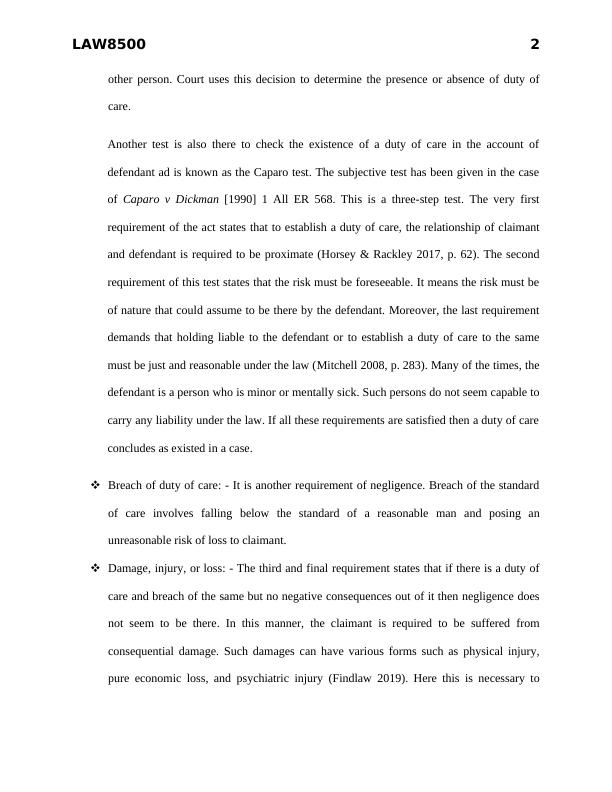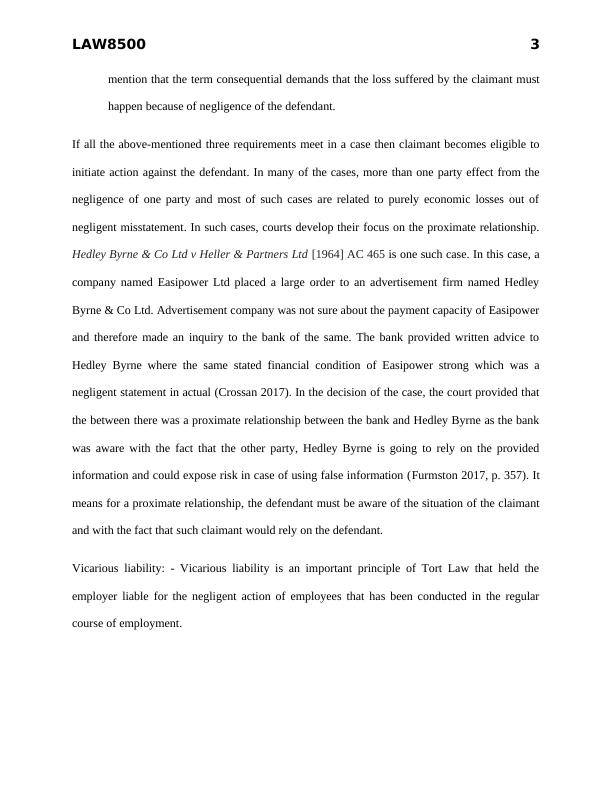LAW8500 Australian Commercial and Corporations Law Issue 2022
This assignment is about researching a problem in Australian Commercial and Corporations Law and using critical thinking to reach a resolution. It tests knowledge of relevant law, application of the law to business situations, and critical and analytical thinking skills.
13 Pages3509 Words13 Views
Added on 2022-10-13
LAW8500 Australian Commercial and Corporations Law Issue 2022
This assignment is about researching a problem in Australian Commercial and Corporations Law and using critical thinking to reach a resolution. It tests knowledge of relevant law, application of the law to business situations, and critical and analytical thinking skills.
Added on 2022-10-13
ShareRelated Documents
End of preview
Want to access all the pages? Upload your documents or become a member.
Negligence and Pure Economic Loss in Construction: A Case Study Analysis
|10
|2398
|112
Negligence Claim against Aldi Supermarket: Elements and Defenses
|6
|1446
|283
Principle of Negligence | Tort Law Assignment
|8
|1998
|311
Negligence Scenario Course 2022
|10
|2647
|9
Tort Law: Establishing Negligence and Defense of Volenti Non Fit Injuria
|9
|2482
|62
Australian Commercial and Corporation Law: Negligence and Agency Law
|13
|3082
|189




